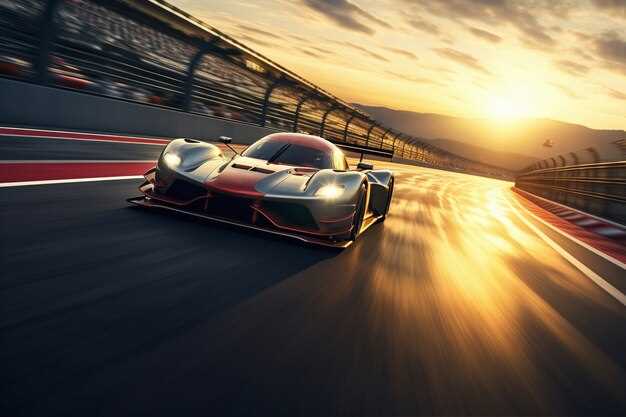
Racing championships represent the pinnacle of motorsport, captivating fans with their high-speed thrills and competitive spirit. These events showcase the best drivers and teams from various disciplines, pushing both man and machine to their limits. Among these prestigious competitions, the World Rally Championship (WRC) stands as a testament to the versatility and skill required in racing across diverse terrains.
The WRC is renowned for its challenging stages that take place on everything from gravel roads to snow-covered paths. This unique format not only tests the drivers’ abilities but also highlights the importance of teamwork and strategy, making it a captivating spectacle for motorsport enthusiasts. As we explore the top racing championships globally, we will delve into what sets each of these events apart, celebrating the innovations and traditions that define them.
In addition to the WRC, championships like Formula 1, MotoGP, and NASCAR each offer their own flavor of motorsport excitement. From the cutting-edge technology of F1 cars to the intense rivalries in stock car racing, these championships have carved out their own unique niches. Join us on this journey as we uncover the thrills, challenges, and stories behind the world’s most esteemed racing championships.
Key Differences Between WRC and F1 Racing Formats
The World Rally Championship (WRC) and Formula 1 (F1) are two of the most prestigious motorsport events globally, yet they differ significantly in structure, vehicle specifications, and competition format.
Firstly, the racing environment varies greatly. WRC events take place on various surfaces including gravel, asphalt, and snow, with stages set in different locations. In contrast, F1 races are primarily conducted on closed circuit tracks with a focus on aerodynamics and speed. This difference necessitates distinct vehicle designs tailored for their respective terrains.
In terms of vehicle specifications, WRC cars are typically based on production models, modified for performance and durability. They are built to handle diverse weather conditions and rough terrains. F1 cars, however, are highly specialized machines engineered for maximum speed and agility on smooth tracks. The technological advances in F1 include hybrid power units and complex aerodynamics that are crucial for competitive racing.
The formats of the two championships also differ. WRC consists of multiple stages over a few days, where drivers accumulate time penalties based on their stage performance. Each competitor races against the clock and competes against others based on cumulative times from all stages. F1 comprises single races at various Grand Prix events throughout the season, employing a set grid format determined by qualifying sessions. The race winner is the first to cross the finish line, and points are awarded for finishing positions.
Moreover, the team dynamics change between the two. In WRC, teams work collaboratively to support a driver through service parks, focusing on car setup and repairs. In F1, teams operate with a more complex structure involving multiple strategists, engineers, and pit crews, emphasizing real-time strategy during races.
Lastly, fan engagement and media coverage for both sports also differ. WRC events allow spectators to view stages from various locations along the route, fostering a unique experience. F1, conversely, has a glamorous image with a focus on the race day spectacle, corporate hospitality, and high-profile venues.
Understanding the Impact of Technology on Performance in WRC and F1

The World Rally Championship (WRC) and Formula 1 (F1) are two of the most prestigious motorsport competitions globally, both showcasing the pinnacle of automotive engineering and technology. In these disciplines, the integration of advanced technology plays a crucial role in enhancing vehicle performance and driving efficiency.
In WRC, teams utilize state-of-the-art technologies such as advanced aerodynamics, lightweight materials, and sophisticated telemetry systems. These elements contribute to better handling on diverse terrains, including gravel, snow, and tarmac. Rally cars rely on complex algorithms and real-time data analysis to optimize grip based on varying surface conditions. Additionally, the deployment of hybrid power units in recent seasons has further elevated performance, combining internal combustion engines with electric propulsion for increased power and efficiency.
Conversely, F1 leverages an even broader spectrum of technological innovations, including cutting-edge computational fluid dynamics (CFD), simulation software, and intricate energy recovery systems. Aerodynamics in F1 is paramount; teams continuously refine body shapes and wing designs to maximize downforce while minimizing drag. The use of hybrid systems in F1, akin to those in WRC, allows for optimized power delivery and improved lap times. Moreover, the introduction of artificial intelligence and machine learning in data analysis enables teams to make rapid, informed decisions during races.
Telemetry plays a vital role in both championships, with real-time data transmission providing critical insights into vehicle performance. Engineers monitor countless metrics, from tire temperatures to engine parameters, which inform strategic choices regarding pit stops and race tactics. In WRC, this is particularly challenging due to the unpredictable nature of rally stages, while F1 benefits from more predictable circuits.
The impact of technology in WRC and F1 extends beyond vehicle performance. These advancements drive innovation across the automotive industry, influencing commercial car manufacturing. Technologies developed for racing often trickle down to consumer vehicles, enhancing safety features, performance capabilities, and sustainability. The continuous pursuit of technological excellence in motorsport not only shapes the future of racing but also contributes to the evolution of automotive technology on a global scale.
How to Get Involved as a Spectator or Participant in WRC and F1 Events

Getting involved in WRC (World Rally Championship) and F1 (Formula 1) events can be an exhilarating experience, whether you choose to be a spectator or a participant. Here’s how to immerse yourself in these prestigious racing championships.
As a Spectator: Attending WRC and F1 events offers a unique opportunity to experience the adrenaline of motorsport live. To begin, check the official websites for upcoming races and buy tickets early, as popular events often sell out quickly. For WRC, consider the terrain and format of the rally when selecting your viewing spot; some stages are accessible by foot, while others require a vehicle. F1 races are typically held on closed circuits, and grandstand seats provide excellent visibility.
Beyond just watching the races, participating in the atmosphere is key. Many events host fan zones featuring exhibitions, merchandise, and food stalls. Engage with fellow fans and join social media groups dedicated to WRC and F1 to stay updated on events and share experiences.
As a Participant: For those interested in participating, there are various paths to explore. In WRC, consider starting in local rally events to gain experience. Joining a rally school can enhance your skills and understanding of competition. Building connections in the motorsport community through clubs and forums can also provide insights about entry-level opportunities.
In the world of F1, becoming a participant often entails a more structured journey. Aspiring drivers typically begin in karting and progress through various junior formula series. Gaining sponsorship and collaborating with racing academies can offer the support needed to advance your career. Additionally, engineering or support roles in F1 teams may be pursued through internships or educational programs related to motorsport.
Both WRC and F1 offer a thrilling glimpse into the world of racing, where fans and participants can share a passion for speed and competition. Whether cheering from the stands or revving up for the next race as a driver, engaging with these championships opens doors to unforgettable experiences.











